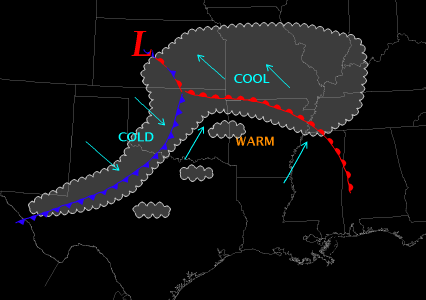Disclosure: This post may contain affiliate links. I earn a small commission of product sales to keep this website going.
Weather Forecasting for Photographers
Last year I did a comparison of two different sunrise & sunset forecasting services for photographers. You can check out the results here. In short, forecasting a sunset is so complex and subjective that these apps are really only best for a big picture understanding. They could help push you to get out of bed early if you had already been on the fence about it. Understanding weather theory could help you with that decision even more.
A better understanding of weather won’t just help you forecast sunrises & sunsets, it’ll give you a better understanding of light. And photography is all about light, right?
Outdoor photographers’ source of light is most often the sun. The light from the sun has dozens of miles of atmosphere to go through before reaching our subjects. The quality & quantity of light is never the same thanks to the variations in the atmosphere.
Understanding these factors will give you a better capability to forecast light and other interesting weather features.
Thankfully there is a book all about weather forecasting from a photographer’s perspective.

An extremely cold air mass settling over the warmer water of Marlette Lake overnight created some amazing fog in the morning. But of course I knew to anticipate this, which is why I chose to camp nearby.
Reviewing Weather Forecasting for Photographers
This review was unsolicited by the author. I asked him if I could get a copy of the book for a review and he graciously obliged. I am not receiving any other compensation.
Weather Forecasting for Photographers is an eBook first published in 2012, with a second edition just released this year (2018). The book was written by professional nature photographer Stan Rose, who was also a professional meteorologist for over twenty years. He also teaches weather forecasting workshops for photographers.
You can expect that because this book was written by a meteorologist, it’s full of technical jargon that surely sounds foreign to the layman. It does have some of that language in it and you may need to re-read some paragraphs, but you still don’t need any understanding of weather to get something out of this book. I had a major advantage in that I taught aviation weather for years, but I can still see my students understanding this book as well.
Weather Forecasting for Photographers is just over 100 pages, broken into chapters about forecast models, reading & interpreting weather charts, storm chasing, lightning, and photographing various other weather phenomena. There is a good smattering of charts & graphs alongside their interpretations, and real-world photos to illustrate how those specific interpretations played out.
Here are some of the other concepts that a photographer will benefit from reading about:
- Understand your own local weather. Most basic weather forecasts neglect smaller, localized weather patterns. The Genoa foothills on the east side of Lake Tahoe are a perfect example of this; the larger air mass passing over the moist lake, and colliding with sharply-rising peaks creates localized patterns that are often ignored in basic forecasts. This leads to great photographic opportunities.
- Fog is one weather phenomena often ignored in weather forecasts but is prized by photographers. This book will tell you which conditions create which types of fog so that you can anticipate it.
- How to look at weather charts and the radar to get a good idea of how storms are playing out and where they’re headed. Be able to look at water vapor charts and figure out how that will affect your sunset.
- Be able to look at clouds, identify them, know the processes that created that type of cloud, and what this means in regards to your atmospheric photography.
- You can’t predict a rainbow, but you can know the conditions that create them and anticipate the probability of one forming.
- Should you shoot the sunrise or the sunset, based on the progress of the passing storm?
These are just a few of the many concepts found throughout the book.

What kind of visuals will a photographer in Dallas expect to see soon? What about a photographer in Topeka?
The text is written in a smooth tone that makes reading easy. There’s the “here’s the basic theory for the photographers”, and then “here’s the mathematical formula for the weather nerds”.
As the author says throughout the book a few times, this is not a book that will tell you exactly what will happen. But it will let you know the range of conditions to expect, and that’s the biggest factor in your decision-making.
There are plenty of weather forecasting resources at the end.
Conclusion
I’ll definitely recommend Weather Forecasting for Photographers, especially to these two types of photographers:
- Those who frequently go out into the wilderness (thinking about both safety and photography).
- Photographers who often make the sky their main subject.
If you’re just curious about how weather forms and how it can influence your photography, I’d also strongly recommend this book.
You can find this $9.75 eBook at Stan’s website here: https://www.stanroseimages.com/product/weather_for_photographers/
